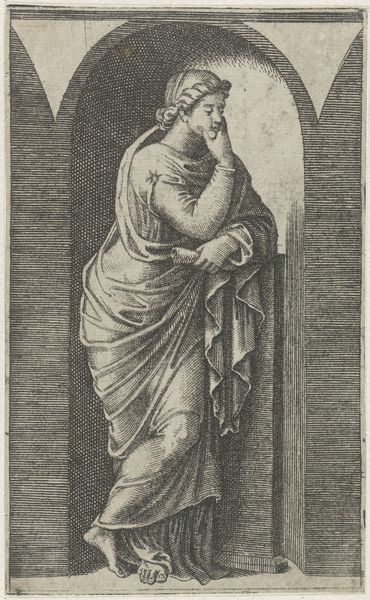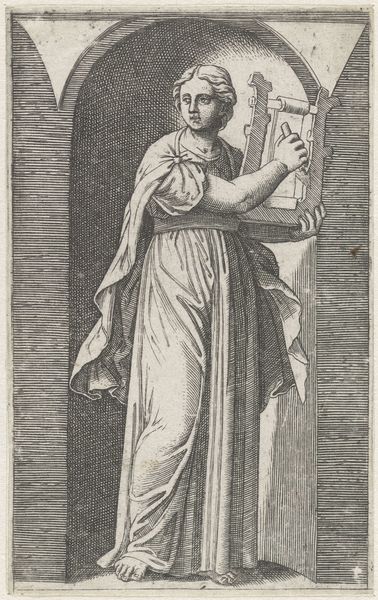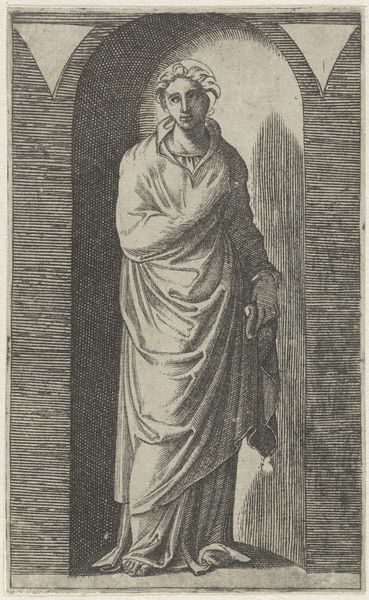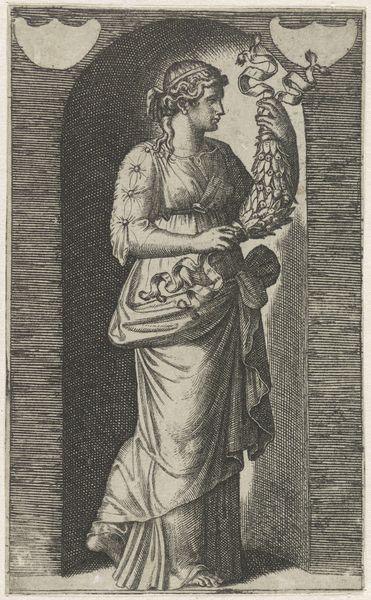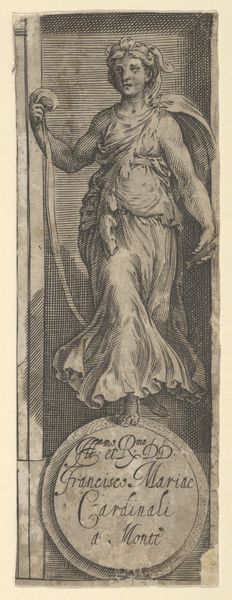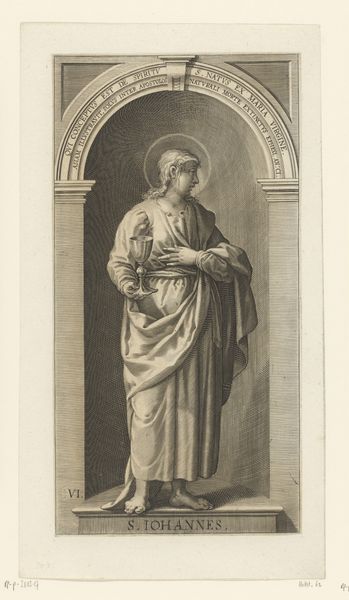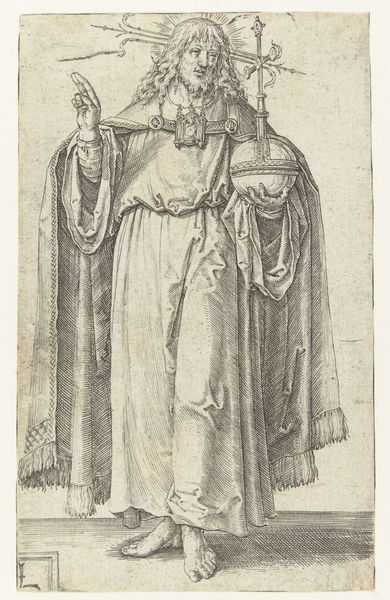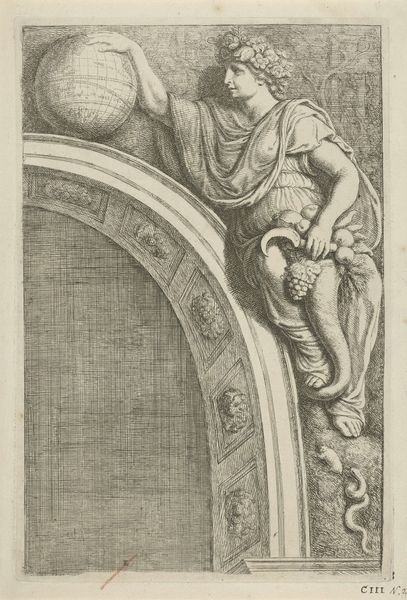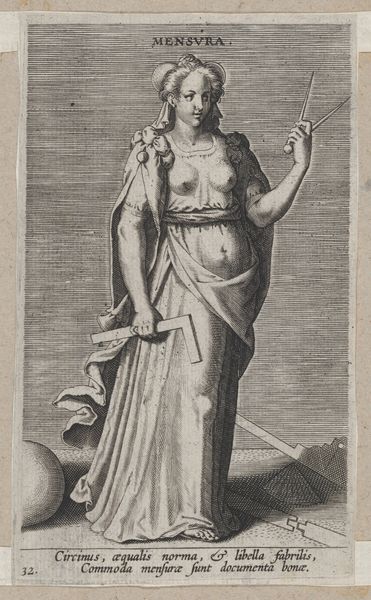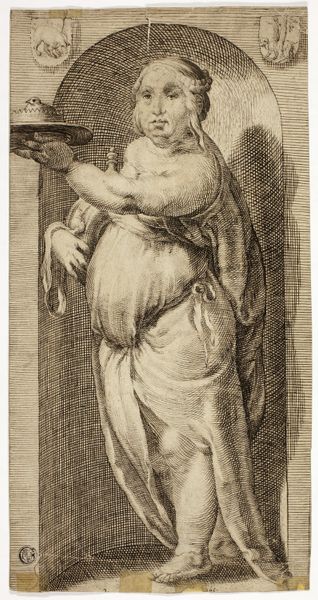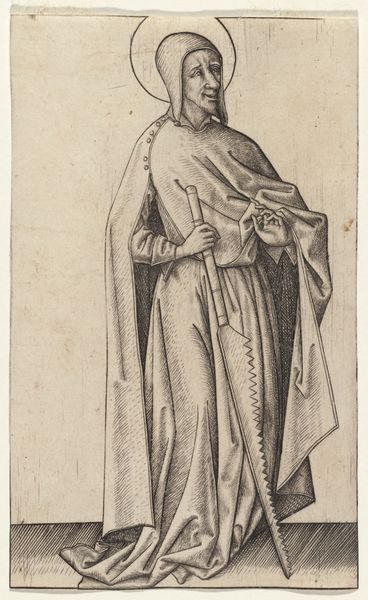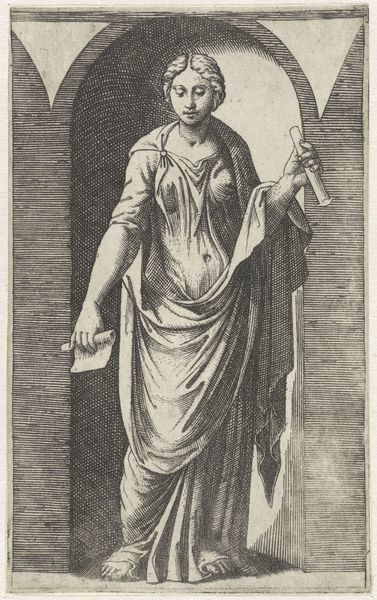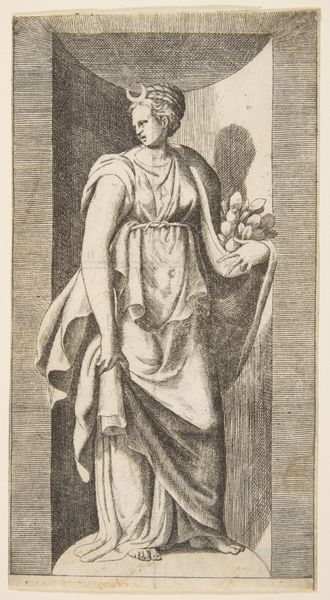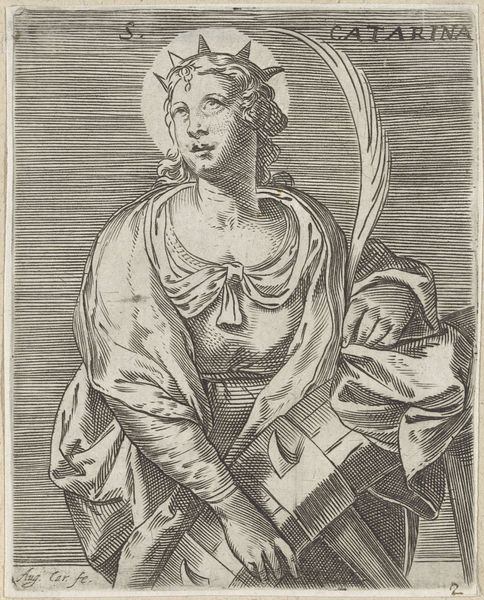
Saint Catherine standing in a niche, resting on a wheel, her instrument of torture 1495 - 1532
0:00
0:00
drawing, print, intaglio, engraving
#
portrait
#
drawing
# print
#
intaglio
#
figuration
#
italian-renaissance
#
engraving
Dimensions: 4 1/8 x 3 1/16 in. (10.5 x 7.8 cm)
Copyright: Public Domain
Editor: Here we have Marcantonio Raimondi's "Saint Catherine standing in a niche, resting on a wheel, her instrument of torture," an engraving from the early 16th century. There's something almost serene about her expression, despite the wheel suggesting a violent past. What resonates with you most in this piece? Curator: The wheel, though present, almost seems secondary, doesn't it? Raimondi really focuses on Saint Catherine as a figure of resilience. Notice how she’s framed within this niche. Niches are interesting in art history— they are symbolic locations for sacred people. Here, the niche resembles both a cage and a shrine. Do you feel a similar tension? Editor: Absolutely, a sense of being both confined and revered at the same time. Is the cracked stone of the niche symbolic? Curator: That’s insightful. Cracks often signify vulnerability, but also endurance, survival. They serve as a reminder of history, of what something has overcome. The wheel itself has stopped turning and became a structural support, so Saint Catherine has transformed an instrument of torture to one of the strengths on which she leans. And what about her gaze, directed off to the side? Does it seem passive or… something else? Editor: There's a defiance, maybe? Like she’s seen worse, and is looking towards something beyond this moment. Curator: Exactly. This subtle defiance makes the image much more than just a portrait of martyrdom. It's an assertion of inner strength, of faith transcending physical suffering. These symbols become culturally resonant beyond their immediate religious context. What would you say is the cultural memory communicated in this artwork? Editor: That even in times of great persecution, faith and spirit can prevail, and become integral part of one’s self and culture. I never thought of these figures as cultural objects of resilience. Thank you!
Comments
No comments
Be the first to comment and join the conversation on the ultimate creative platform.
